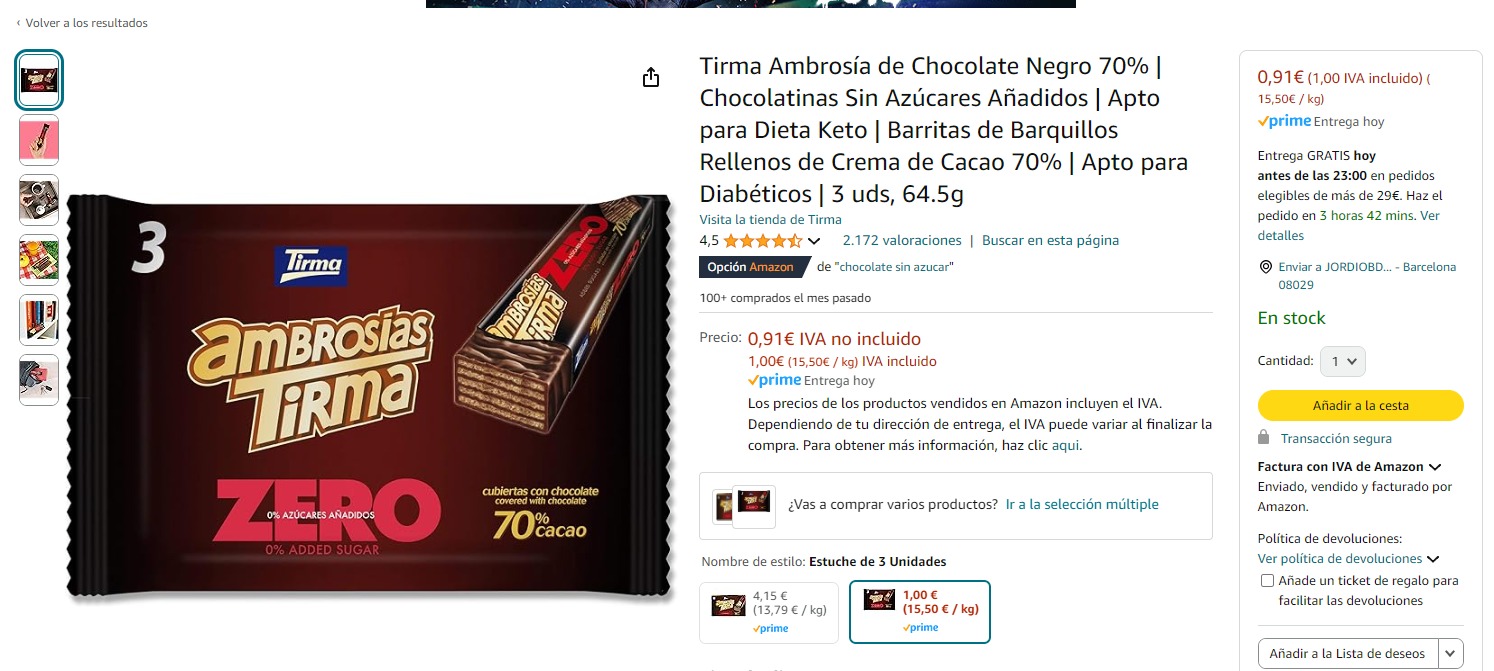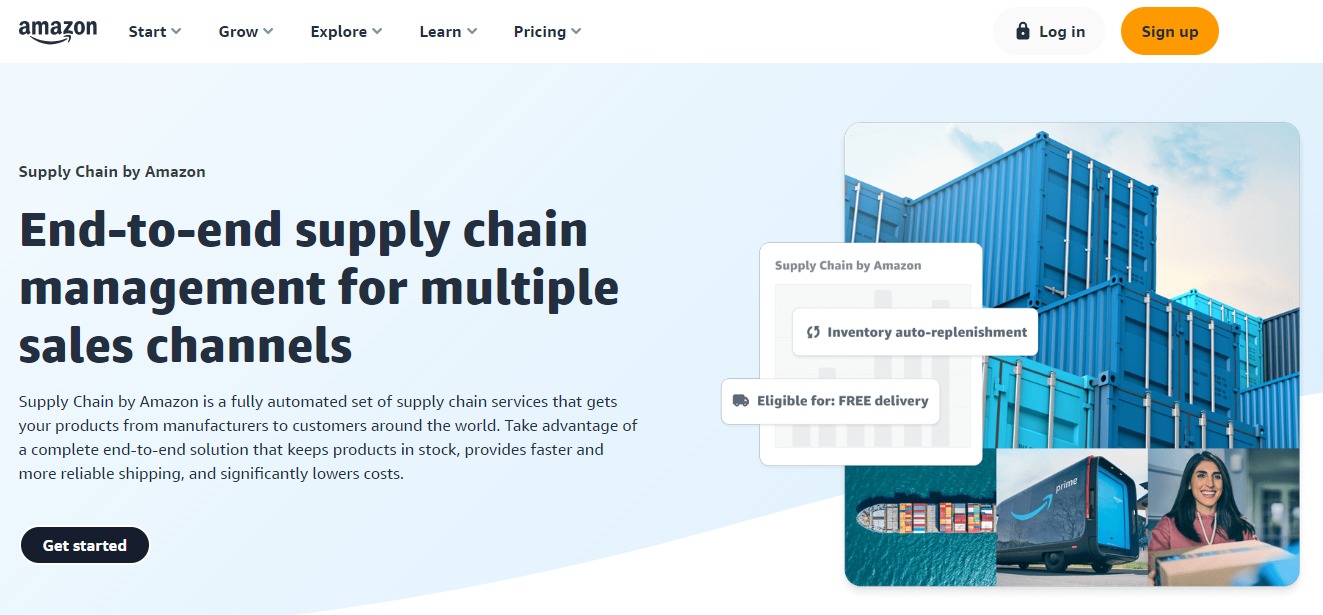If you have ever listened to your manager vendor or Category Manager of Amazon Talk about your product being "crap'ed" , it is time to pay attention. CRAP means "Cannot performs Any Profit" (cannot generate profits) and refers to products that are structurally not profitable for Amazon.
In this article, we will see the causes of this problem, how to avoid it and the strategies to solve it.
Index
What causes Amazon Vendor to classify a product like CRAP?
Unlike other marketplaces, Amazon does not consider the general health of the Vendor account when making CRAP decisions . Instead, each product must be profitable on its own . If not, you will go to the pile of “crap”. There are several reasons why a product can be labeled as CRAP:
Price Matching
If other Amazon seals or other external marketplaces sell your products at a lower price , Amazon will match that price, as they comment on their article about Price Matching . In practice, Amazon reserves the right to match or even improve the minimum price they find online. This can happen because in other sites there is a promotion or volume discount that you have offered or other vendors. There may also be errors when putting the price or that a third seller is liquidating the product. Be that as it may, that can affect the price of Buybox and take your product to a CRAP state.
Non -competitive costs and cost prices
Amazon expects the products to be profitable from the moment they get to the platform to sell. If your costs or cost prices take Amazon Retail to have non -profitable margins, the listing as CRAP will be classified.
Small packages / low -price individual products
Small / individual size products such as a chocolate bars that are sold for less than € 1, can involve high shipping costs for Amazon, especially if the customer is within the Prime program. Imagine having to send an energy bar that is worth € 1.5. If these products do not provide significant value in the customer's life cycle, they will probably be classified as CRAP.
But it can also happen that Amazon Retail assumes those products as losses to conserve their image / status / consideration by customers as the best convenient internet. In that case, BARE BAR.

Very heavy or bulky articles
Large and heavy products increase shipping costs, making profitability difficult for Amazon and suppliers. Anyway, there is a solution for this, because there is the VOC (Vendors Own Carrier) program through which the manufacturer sends the product to the final customer. It would be a kind of prime from the seller or Seller Fulfilled Prime, but for Amazon retail.
Fast -expired products
Imagine that you are in the Food category and that you sell a type of product that expires in less than a month. Would you upload it to the vendor platform? What is the point of buying that product, unless you have a meteoric rotation? And, if the product enters a PO, does it make sense to serve it? Well that. Let's avoid it.
HIGH RETOLITION Ratio
It is quite obvious, but you have to put it on the table. If a product is high of returns and/or if the cost of customer returns exceeds the assignment agreed with the supplier , the product is likely to be classified as CRAP.
Oversocks
When the inventory of a product is classified as Overcombe (oversock), Amazon reduces the price to reduce the inventory in its logistics centers, which negatively affects the margins and can lead to the CRAP classification.
Consequences that a product is crap
Well, we will not fool you, they are not good:
- Your products will receive less free visibility from A9
- The product will automatically leave the subscribe program and save, which means less recurrent and, bouncing orders, less purchase orders
- The product cannot be announced at Amazon Marketing Services
- In Amazon retail there are some (Levels of Service) by category. If you do not get to those, you miss some benefits as a free promo out of Amazon through display ads or better SEO rankings
- Brake to Purchase Orders, which does not mean that the product must be sold on Amazon, it will stop selling at Amazon Retail, but other seals can sell it at the Marketplace

How to prevent your products from being classified as CRAP?
It is true that for the brands affected by CRAP there are different strategies to reactivate their products on the platform, but it is more effective to take measures to prevent a product to be classified as CRAP.
The first thing is to detect whether the product is in crap or not, and that we can only do it by comparing previous Sell-in. Amazon will not let us know, we have to do it.
To avoid falling into crap, you can:
Apply MAP/SDA policies
Check your Minimum Advertiseed Price (MAP) policies if you sell multiple retailers/seals. Making these policies outside the United States can be difficult or illegal , but you can explore selective distribution agreements (SDA) to maintain greater control over resale prices.
Check cost prices and terms with Amazon
It is likely that your manager vendor requests improvements in costs for dazzled items . Although you should never grant cost improvements without addressing the root cause of the problem , it could be useful to reach a temporary agreement with Amazon.
Optimize packaging
Adapt the packaging of your products by reducing the use of materials and empty space. It complies with the Amazon guidelines for shipping in your own container (SIOC) to minimize variable costs.
Improvements in the supply chain
Explore alternatives and logistics improvements with Amazon to reduce handling and shipping costs, such as consolidated full load orders or inbound programs . These improvements can reduce variable cost structures and benefit the margins of Amazon.

Create product packages
Consider grouping products that are not profitable to sell individually. This allows a higher sale price and reduces variable handling and shipping costs. In Azzgency, we love Bundles. For something it will be.
Understand the reasons for customer returns
If customer returns affect the margins of Amazon, the root cause must be identified. Make sure your packaging protects products and that information on product pages does not confuse customers.
Avoid large orders through the Born-To-Run program
Although it may be tempting to request great requests through the Born-To-Run program to achieve quarterly objectives , this strategy may result in an excess of inventory. If this happens, Amazon is likely to apply price reductions that could classify your freshly launched products as CRAP. Instead, manage your inventory "with love" to avoid these situations.
Consider a hybrid sales strategy
If Amazon eliminates your listing due to a CRAP state that cannot be resolved, explore agriculture and sales alternatives. For example, open an account in Seller Central as Backup and try to sell the product at Amazon Marketplace.
Difference between Roo and CRAP
In categories of consumer goods, you may listen to your Amazon to speak of Roo instead of CRAP. Roo means "Removal of Offer" (elimination of the offer) and applies to products in the Subscribe and Save program. If a product receives a Roo classification, current subscribers will continue to receive their deliveries, but new customers will not be able to subscribe or buy the item.
Conclusion
When your products are affected by CRAP actions, you must act quickly to minimize the impact on your sales and reviews on Amazon.
First, identify the root cause. Then, act and take measures optimizing margins using the strategies I explained before. Keep in mind that increasing financing for affected products should be considered only as a temporary solution , rather, you have to work to develop a long -term solution that eliminates your articles from the CRAP list. And, if those skus have no future on Amazon, you don't stick to them. As the Americans say, we must "let them go" (let go) and focus on the products that do work.

